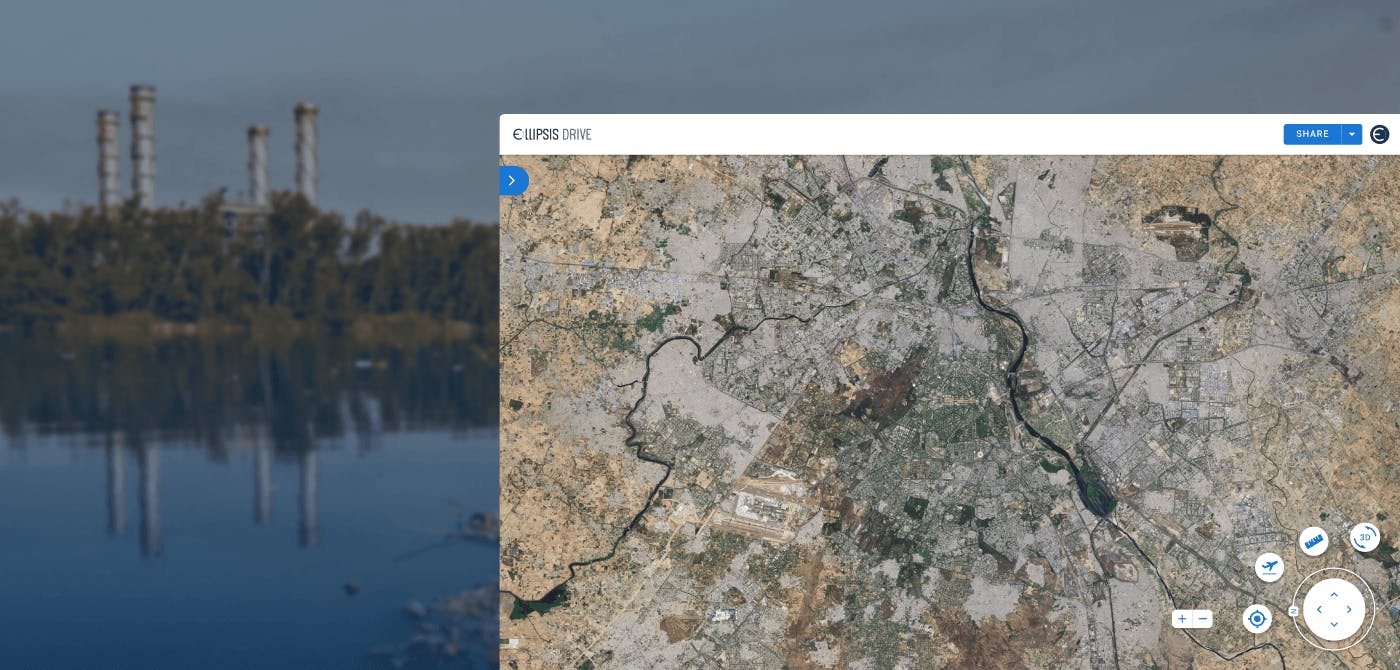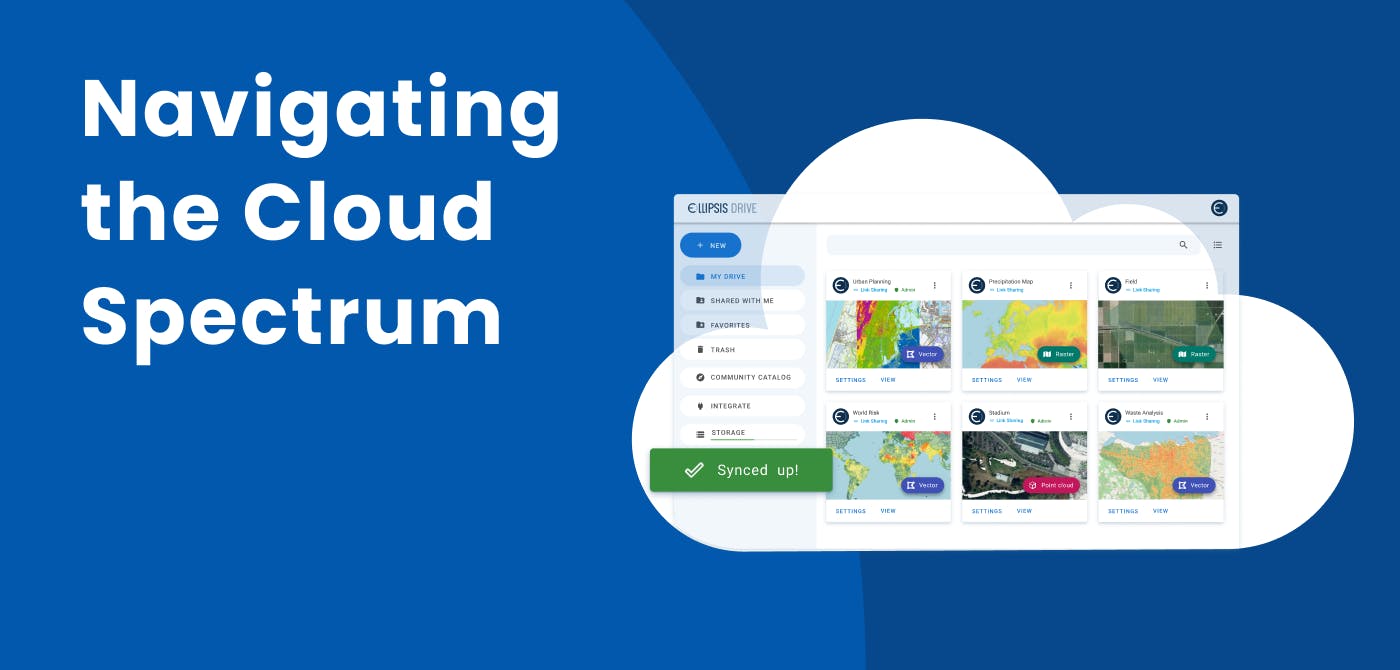GIS
How does Spatial Data Management help companies with ESG Compliance?

Contents
Introduction
In today's business landscape, Environmental, Social, and Governance (ESG) considerations have become pivotal for companies seeking to build resilience, attract investors, and maintain a positive brand image. Geospatial data management, which involves the collection, analysis, and visualization of geographic information, plays a critical role in helping organizations achieve ESG compliance. This article explores how geospatial data management empowers companies to address environmental, social, and governance issues effectively.
But first, let’s start off with the basics!
What is ESG?
ESG stands for Environmental, Social, and Governance, and it refers to a set of criteria or factors that are used to assess and measure the sustainability and ethical impact of a company or organization. These criteria are increasingly important for investors, stakeholders, and society as a whole in evaluating the behavior and practices of businesses and institutions.
The Environmental (E) aspect of ESG focuses on a company’s impact on the environment. This includes factors such as climate change, resource management and biodiversity.
The Social (S) component of ESG assesses how a company interacts with its employees, customers, communities and other stakeholders. This includes factors such as labour practices, human rights, community engagement and customer relations.
Governance (G) refers to the systems and structures that guide a company’s decision making processes and overall corporate behavior.
ESG considerations are essential in today's business landscape because they address critical issues like sustainability, regulatory compliance, risk management, and stakeholder expectations. Prioritizing ESG can lead to more resilient, responsible, and competitive businesses that are better equipped to thrive in an evolving global economy.
Geospatial Technologies Enabling ESG Compliance
To comply with ESG requirements, organizations must ensure that their ESG data is accurate, transparent, and based on reliable information. This includes disclosing the sources of ESG data and the methodologies used to collect and analyze it. Geospatial data, which refers to information that is tied to a specific geographic location, can play an important role in ESG compliance. Spatial data can be used to analyze and understand the environmental and social impacts of organizations, as well as to inform decision-making related to governance.
The stellar development of the below technologies further helps enable ESG compliance -
Satellite Imagery: Satellite data provides a bird's-eye view of environmental changes, helping companies monitor deforestation, track emissions, and assess land use changes.
GIS (Geographic Information Systems): GIS technology allows companies to create spatial databases, perform geospatial analysis, and visualize data on maps. This aids in decision-making and risk assessment.
IoT (Internet of Things): IoT devices equipped with GPS and sensors collect real-time data, such as air quality, temperature, and water quality, to monitor environmental conditions and ensure compliance with regulations.
Blockchain: Blockchain technology combined with geospatial data can enhance supply chain transparency, verifying the authenticity and sustainability of products and materials.
Machine Learning and AI: These technologies analyze vast geospatial datasets to predict environmental risks, optimize resource allocation, and identify trends that can inform ESG strategies.
How does spatial data management help companies with ESG compliance?
A robust spatial data management system can significantly affect the success of ESG compliance. A spatial data management system can help organizations collect and analyse spatial data related to ESG factors, improve data quality, accuracy, and reliability, identify areas where ESG risks are concentrated, develop strategies to mitigate these risks, create more detailed and accurate ESG reports that include spatial data, maps, and other visualizations, and help organizations make more informed and data-driven decisions related to ESG initiatives.
Let’s dive into the nitty gritties of how spatial data management helps with ESG compliance.
Environmental Sustainability
Resource Management: Geospatial data allows companies to monitor and manage their natural resource consumption more efficiently. For example, in agriculture, satellite imagery and geographic data can optimize irrigation and fertilizer use, reducing water waste and environmental impact.
Climate Change Mitigation: Geospatial tools assist in tracking and reducing greenhouse gas emissions. Companies can identify emission sources, measure carbon footprints, and implement strategies for emission reduction, thereby aligning with ESG goals.
Ecosystem Preservation: Geospatial data helps companies identify areas of high biodiversity and ecosystems that need protection. By avoiding activities that harm these areas, businesses can demonstrate their commitment to environmental conservation.
Social Responsibility
Supply Chain Transparency: Geospatial data enables companies to trace the origins of products and raw materials, ensuring compliance with fair labour practices, ethical sourcing, and responsible production.
Community Engagement: Geospatial data facilitates mapping and analysis of communities impacted by business operations. Companies can better understand the needs and concerns of these communities, fostering positive relations and engagement.
Health and Safety: By analysing geospatial data, organizations can assess the impact of their operations on public health and safety. For instance, it can help identify pollution sources and assess health risks for nearby communities.
Governance and Accountability
Compliance Monitoring: Geospatial data supports compliance with local and international regulations. Companies can track land use, zoning, and environmental regulations to avoid legal issues.
Risk Assessment: Geospatial analysis identifies potential risks related to a company's physical assets and operations. This information is crucial for risk mitigation and disaster preparedness, aligning with good governance practices.
Stakeholder Reporting: Geospatial visualization tools make it easier for companies to communicate their ESG efforts to stakeholders. Detailed maps and data visualizations help convey complex information in an accessible manner.
Conclusion
Geospatial data management has emerged as a powerful tool for companies striving to enhance their ESG compliance. By leveraging geospatial technologies and insights, organizations can improve environmental sustainability, social responsibility, and governance practices. This not only aligns businesses with global sustainability goals but also strengthens their competitiveness, fosters positive stakeholder relations, and secures a more sustainable future for all. As the importance of ESG considerations continues to grow, geospatial data management will remain at the forefront of responsible corporate practices.
Liked what you read?

Subscribe to our monthly newsletter to receive the latest blogs, news and updates.
Take the Ellipsis Drive tour
in less than 2 minutes'
- A step-by-step guide on how to activate your geospatial data.
- Become familiar with our user-friendly interface & design
- View your data integration options

Related Articles

Navigating the Cloud Spectrum: From Generalist to Specialized, and the Perfect Middle Ground
The modern cloud ecosystem spans a wide spectrum of offerings, from general-purpose infrastructure to highly specialized platforms built for domain-specific tasks. At one end, generalist clouds provi
5 min read

Unlocking the Potential of Data: Comparing Tabular and Non-Tabular Protocols
The world of data is a complex landscape and each year, the complexity of that landscape grows exponentially. A combination of new data capturing technology, data processing technology and demands fo
6 min read

Understanding the importance of GIS in Urban Planning
Cities are robust places filled with life, but before it becomes a cosmopolitan paradise, plenty of ever-evolving complexities are happening behind the scenes to bridge the gaps and create an area spa
3 min read